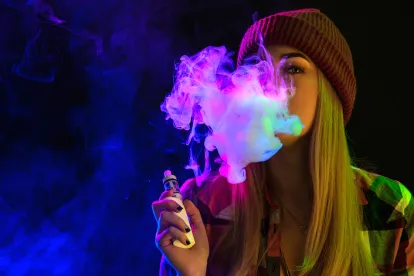The ASA has banned four e-cigarette producers, including British American Tobacco (BAT), from promoting their vaping products on Instagram.
The e-cigarette producers advertised their vaping products on their own Instagram accounts. The posts featured various celebrities holding and endorsing the products.In line with the EU Tobacco Products Directive, Rule 22.12 of the UK CAP Code prohibits the advertisement of unlicensed nicotine-containing e-cigarettes in newspapers, magazines, periodicals and online media. The rule does, however, permit factual claims about products on a marketer’s own websites. Further, the regulator’s guidance also suggests that, in principle, this exception might be extended to social media activity.
In its ruling against BAT, BAT argued that posting factual claims on their products’ Instagram accounts fell within the exception, since it is analogous to a website. Not surprisingly, the ASA did not agree. BAT’s use of celebrities in its Instagram posts was considered to constitute “clearly [going] beyond the provision of factual information and was promotional in nature”. BAT’s posts included images of celebrities, which did not have a direct connection with any factual claims the e-cigarette provider was purporting to make.
The ASA considered whether posts on a public Instagram profile could be distributed to users who did not follow the account. Through the use of hashtags and Instagram’s Explore option, other users could view the posts, meaning the content was pushed to consumers who did not necessarily opt-in to receiving it. The ASA therefore ruled that material posted on Instagram was not analogous to factual material posted on a marketer’s website. Further, the inclusion of other non-factual text not directly related to the product itself went beyond what is permitted under the CAP Code.
The guidance is useful in clarifying the types of media that are permitted for the advertising of unlicensed, nicotine-containing e-cigarettes: outdoor advertising, posters on public transport, leaflets and cinema. Meanwhile, the guidance also indicates what type of media is prohibited, which includes commercial emails and text messages, online advertisements including banners or pop-up advertising, paid-for search listings and social media placements, in-game and in-app advertising.
The guidance highlights the types of claims that will be considered factual in nature, and thus permissible on a marketer’s website or social media, such as the names of products, descriptions of the product’s components, price statements and ingredients. Promotional claims are not factual claims. Promotional claims tend to: use descriptive language that is not objective, use significant imagery that is unrelated to the product and deploy promotional techniques such as marketing offers and prizes.
The ASA also adjudicated that the ads also breached CAP Code rule 22.10 for featuring an individual with an e-cigarette who appeared to be younger than 25 years old. BAT believed that the model in one of its ads was over 25 years old. She was, in fact, 24. Upon learning of this, BAT claimed that the post was removed from the Instagram page. Nonetheless, the manufacturer had breached the rules.
The ASA considered whether the ads also breached rule 22.9 for being likely to appeal to people under 18 years old, but this was not upheld in its ruling. Reasons for this conclusion included:
- some of the posts referred to adult fashion brands that did not have a range for children;
- the tone of the ads was adult in nature and not associated with youth culture;
- the ads did not incorporate themes that were necessarily relatable to young people; and
- the models featured did not appear to be under 18.
The impact of the ASA’s ruling is that all of the banned ads were removed from Instagram and prohibited from appearing again in that form.
Comment
The ASA guidance left open the possibility of using social media to promote the advertisement of nicotine, which is subject to a near blanket ban in advertising. However, the regulator is clearly unwilling to allow the rules to be stretched to permit promotional advertising, taking a strict approach with what constitutes “factual” information.





 />i
/>i

